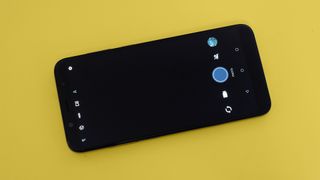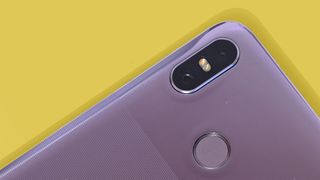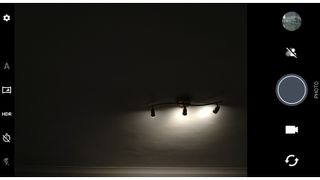Why you can trust TechRadar
Battery life
- All-day stamina, better than predecessor
- USB-C charging
- Fast charge with no wireless option
The HTC U12 Life has a 3,600mAh battery. It's not gigantic. It's not small. And the real-world performance is largely consistent with this spec.
It will hang on for a full day, usually with 15-20% charge left if you don't do anything too demanding such as long stints of gaming or hitting the YouTube 'next video' button a few too many times.
Purely anecdotally, the HTC U12 Life seems to last less long than the Honor 8X, but no shorter than the Moto G6 Plus.
Results in our standardized video test are acceptable, if nothing more. Left to play a 720p video at maximum brightness for 90 minutes, the HTC U12 Life loses 25% charge.
The Moto G6 Plus loses 20% in the video test, suggesting, as in other areas, that the U12 Life's optimization is, well, sub-optimal. We also noticed the phone becomes a little warm during video playback. Trotting out a 720p video is not a tough job.
But in both real-life testing and a more abstract video benchmark, the HTC U12 Life outlasts the HTC U11 Life. That phone lost 35% in the same test and often struggled to last a full day of normal moderately intensive use.
You charge the battery with a USB-C port, and there’s fast charging. However, there's no wireless QI support.

Camera
- Solid hardware
- Somewhat limited software and processing
- Clunky, slow HDR
The HTC U12 Life has a 16MP rear camera and a secondary 5MP one on the back to act as a depth sensor. This creates a 3D map of a scene in order to blur out the background.
Some phones at the price only have 2MP depth sensors. Sure enough, the phone seems a little better than the Motorola One at successfully picking out the subject and not blurring parts it shouldn’t. However, it's also pickier than most about the scenes it will successfully blur, and those it won’t.
While the hardware is decent, the software can in parts seem like a bit of a blunt instrument. You see this elsewhere too.
The HTC U12 Life does not have a modern HDR mode, for instance. Most phones at this level have an Auto HDR setting that decides when HDR optimization is needed, and how much dynamic range optimization to apply.

Here you have to manually enable and disable HDR. That's not good enough.
The HDR mode is powerful, but not at all subtle when only a little tweak is needed. It's also very slow, taking around 2-2.5 seconds to capture and process an image. Before this happens, you can't take another shot.
Switch HDR off and the HTC U12 Life's camera is quick, but you'll also end up with quite a bit of overexposure in mixed lighting scenes. HDR also reduces contrast too much, taking away some image punch. Where's the subtlety and finesse? Rival phones at the price have it.
Other kinds of processing are a little unrefined too. HTC's noise reduction is less effective, or at least aggressive, than most, leaving you with grainy low-light images.

However, with a steady hand you can get a decent amount of detail even when shooting at night, for a non-stabilized camera without very large sensor pixels anyway.
The HDR mode is also effective at boosting dynamic range and image brightness at night, although the lens is susceptible to flare even after cleaning the glass covering.
Learn when to use HDR and when to leave it and you'll get some great images out of the HTC U12 Life. It just lacks some of the intelligence expected at the price nowadays. And that HDR speed: bad.
Some important extras are missing from the video side too. There appears to be no software stabilization, so handheld video will always look quite jerky, even at 1080p, 30 frames per second.

You can shoot at up to 4K at 30fps or 1080p at 60 frames per second, but proper stabilization is a major omission.
A 13MP selfie camera sits around the front. And we see some of the same processing character as the rear camera. The detail rendering is fairly good even with slightly dingy indoors lighting, but noise is quite apparent too. Again, some of the finishing touches are missing.
This does improve if you turn the face enhancement mode on, though, as it applies extra processing. It does also seem to lighten skin, though, which has raised eyebrows in similar modes in the past.
Camera samples












Current page: Battery life and camera
Prev Page Introduction, key features and design Next Page Anything else I should know?Andrew is a freelance journalist and has been writing and editing for some of the UK's top tech and lifestyle publications including TrustedReviews, Stuff, T3, TechRadar, Lifehacker and others.

My haunted Roomba S9+ kept me up all night and iRobot says there’s no way to fix it

HP launched a very promising ultra portable XPS13 killer laptop — the 1kg EliteBook 635 Aero G11 is only available in Japan with seemingly no plans for a global launch, but why?

Is this the best time ever for iPhone deals at Verizon? Multiple devices are free without the need for an annoying trade

